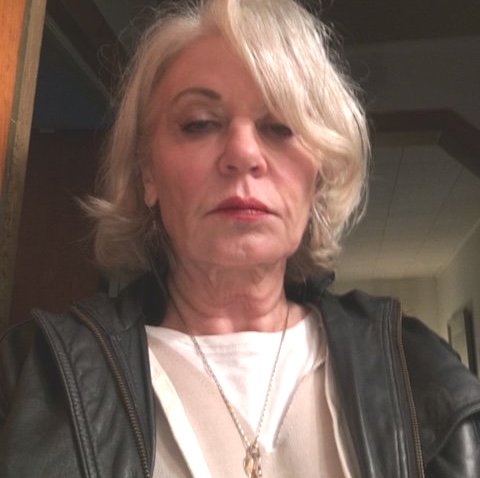Claudia Carr is a working artist. She holds a Master’s Degree in Art History, she was a member of 22 Wooster Gallery and worked as director of sales at Sindin Galleries on Madison Avenue in Manhattan. Claudia taught Art History at Colgate University. She was curator of collections at The Picker Art Gallery in Hamilton, New York before opening her own gallery, “Claudia Carr Works on Paper” in SoHo, New York.

“Art, whatever it takes” – The RomeArtProgram has made a series of interviews with people involved in art, living in Italy, the USA and the UK, to know their feelings and orientation during these times of emergency.
–Interview with Claudia Carr:
RomeArtProgram: What is your definition of “Art” today?
–Claudia: Art is an engagement with the world through the senses, the mind, and spirit.
RAP: Art is dynamic and regenerates itself… how does it change, and how did it change us?
–Claudia: Picasso said “all great art is subversive” Art can change how you see and how you feel. Hopefully, it connects us to our humanity.
RAP: When (and how) did you understand that art was becoming very important in your life?
–Claudia: I was fortunate to be born into a family that loved and cherished art. My mother was an artist. It was always a part of my life- my destiny.
RAP: What role does art play today? What are the “great figures” who have recently changed it? Do you feel close to any of these figures?
–Claudia: Art plays the same role it has always played; to engage the heart and the mind. I haven’t a perspective on the current scene. I have an art-historical perspective. I love glorious painting, Delacroix, Goya, Joan Mitchel, Larry Poons; astonishing sculptors Cellini, Brancusi, Maillol, Lehmbruck and the invention of El Antussi
RAP: Are there still traditional figures such as collectors, muses, mecenate and patrons, in today’s art and society interaction model?
–Claudia: There are terrific gallerists and some enlightened patrons, Galleries can help artists survive and they inform the public. But, one has to be very discerning in choosing representation and negotiating terms.
RAP: How have the new technologies and media culture changed art today, improving or worsening it…? What do you feel are your biggest challenges?
–Claudia: I am not technologically sophisticated. However, I appreciate innovation. Technology has introduced new categories in how we consider art within those new mediums. The language is different. I wonder what values are inherent in those mediums, what is wonderful yet what gets lost. For me an artist’s hand is primary.
RAP: Art as a mirror of man, in this moment of emergency seems to be shattered …what do these fragments reflect now?… Shadow or light of the moment?
–Claudia: There can be no form without light and dark. Rather Biblical isn’t it?
We contend with the struggle.
RAP: Understanding, interpreting, and then possibly judging the work of art; which is the right path when we are in front of a piece of art?
–Claudia: Learning how to see is essential. The eye is the essence of that experience, Judgement is beside the point. Art speaks it’s own language.
RAP: Which is the real role of Academies and Art schools today? What can artists learn from these institutions today?
–Claudia: Schools can teach techniques and give artists exposure to different perceptions and information, Schools can open conversations and associations with other artists.
RAP: Art too has undergone a complex process of globalization; can having an authentic and genuine style be an advantage or a drag for an artist?
–Claudia: Style can be a trap. One must be one’s authentic self. The rest is noise.
RAP: How do Art Galleries and Museums position themselves today, and, in your opinion, how should they?
–Claudia: Museums and galleries give the public exposure to art. They provide the experience of seeing the huge dimensions of artistic human endeavor. In an essential way, they can teach us who we are where we can from, and how we are evolving. They can open dialogue, wonder, revelation, and sometimes comfort.
RAP: “Figuration” or “Abstraction” ? Which of the two is better descriptive of the period we live in? Which one will have a better future?
–Claudia: I don’t know the answer to that question. We can and should have both.
RAP: Today we often speak of “emerging artists”; what advice based on your experience do you feel you can give to young artists?
–Claudia: If you are an artist you have to work. You have to keep working no matter what. It isn’t an easy path to follow but it is your journey.
RAP: Art as a lens for reading the present, can it modify the space and time we pass through? …will art save us?
–Claudia: What gives life meaning? Art can sustain and enlighten us. Can it save us? Save us from what? Can beauty save the world? I doubt it but what would the world be like without it?
___________________
RomeArtProgram
#romeartprogram
Art-as-Power
.
